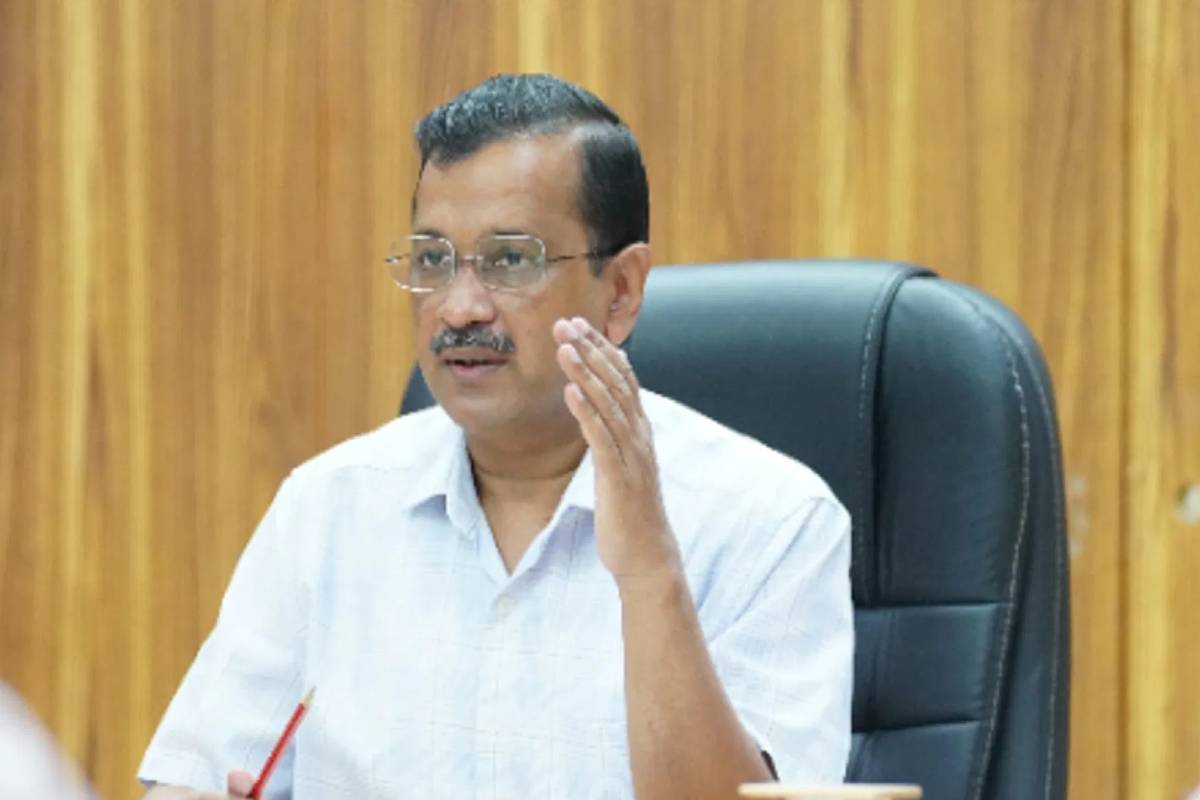Delhi CM Kejriwal inaugurates flyover on ring road at Moti Nagar
The chief minister pointed out that people travelling between Dhaula Kuan and Azadpur, and between Delhi and Haryana's Rohtak, will benefit from the flyover.
Delhi government has taken a step towards conserving and recharging groundwater by constructing two lakes inside the premises of Pappankalan Sewage Treatment Plant (STP) Phase-II.

Delhi CM Arvind Kejriwal [File Photo]
Chief Minister Arvind Kejriwal on Saturday conducted an inspection of the Pappankalan Lake to evaluate the progress of the Delhi government’s initiative to rejuvenate the lake.
“The government has been pouring water into the lake for the last one year, leading to a remarkable 6.25 metres increase in the groundwater table,” an official statement said.
Advertisement
The project aims to augment Delhi’s water supply capacity by developing 26 lakes and 380 water bodies in the city.
Advertisement
The CM has been personally monitoring this initiative and this inspection was part of his efforts to invigorate the efforts of the government on the ground.
He expressed his satisfaction with the performance of the project during the inspection and said that such projects will help make Delhi self-sufficient in terms of water production.
Delhi Water Minister Saurabh Bhardwaj, Delhi Jal Board CEO and other senior officers were also present during the inspection.
Talking about the project after the inspection, Kejriwal said, “There is a shortage of drinking water in Delhi. While we have been trying to convince our neighbouring states to supply us with more water, we are also doing our best to maximise Delhi’s potential to produce water on its own.”
He added that the government is working on recharging and recycling water to make the state self-sufficient to an extent.
With modernisation and globalisation, many countries have worked on various technologies to recycle wastewater. The Delhi Government too, has come up with a process where it rejuvenates water bodies with treated water to recharge the water table.
“We treat water to the best possible levels of purity, ie, 10:10 BOD:TSS and then pour it out into lakes. This water then percolates into the ground and recharges the water table,” the CM said.
The Delhi government has taken a step towards conserving and recharging groundwater by constructing two lakes inside the premises of Pappankalan Sewage Treatment Plant (STP) Phase-II.
These two lakes have a combined area of 11 acres and a holding capacity of 49 million gallons (MG).
The treated effluent from Phase-II STP, which has a Biological Oxygen Demand (BOD) of less than 10 mg/L and conforms to the prescribed norms, is used to recharge the groundwater here.
The CM remarked that the construction of the 7 acre and 4 acre lakes at the site has beautified the area to such standards that it is worth recreational use now.
The government will now take up quality landscaping on the site and encourage locals to adopt it as a public recreational site like a park.
The government has also installed Piezometers around the lakes to monitor the improvement in groundwater levels, and the ground water table has already risen in the range by 6.25 metres in a half kilometre radius zone.
A battery of tube wells is proposed to be installed in the available space of the Pappankalan STP complex. The extracted groundwater will be treated through a proposed Reverse Osmosis (RO) plant to produce potable water and store it in nearby Underground Reservoirs (UGR).
The government has set a target to achieve an additional 20 million gallons per day (MGD) of potable water in a phased manner over the next 1-2 years. In the first phase the government will extract 10 MGD water by August-September and eventually progress further.
The construction of these two lakes is a commendable initiative towards conserving groundwater and promoting biodiversity, the CM said.
Since the lake development, the mounds located within the lakes have become nesting places for birds, and a variety of birds have become a regular feature at these lakes.
The CM also informed that as a part of its efforts, the Delhi government has started working on the rejuvenation of 26 lakes across the city, with a total area of over 300 acres. Out of these, 16 lakes are artificial, and the remaining 10 are pre-existing lakes that have either dried up or got polluted over time.
To achieve the objective of rejuvenation, the government plans to use 230 million gallons per day (MGD) of treated water from DJB STPs. Moreover, in-situ treatment systems will be installed in all the lakes to polish the water and increase the dissolved oxygen levels above 5 mg/L, which is a crucial parameter for measuring the health of any water body.
The holding capacity of these lakes is estimated to be around 462 million gallons, and the government plans to install piezometers in all these lakes to measure the increase in groundwater levels. The government will also carry out comprehensive landscaping in all the Delhi government-owned lakes.
Apart from the lakes, the Delhi government has also completed the rejuvenation of 35 water bodies that have an area of less than 2.5 acres, and the work on the remaining ones is in progress. The government plans to take up the rejuvenation of 131 water bodies of Delhi government and 250 waterbodies of DDA, he said.
“Delhi will soon become a city of lakes and the water table of the city too will rise at a very large scale,” Kejriwal said.
Advertisement